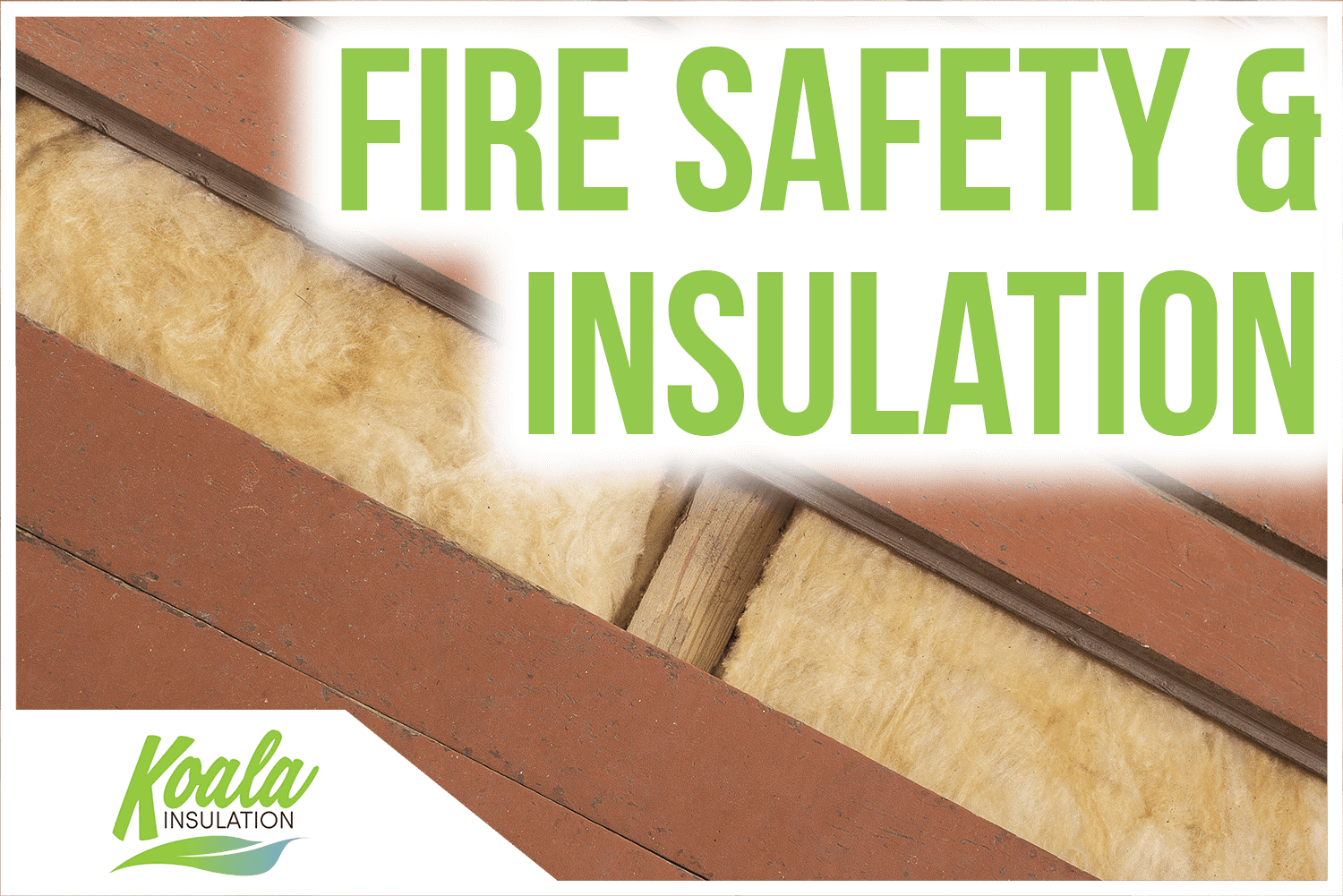Fire Safety & Insulation: Learn More with Jacksonville Experts

Some of the top priorities for homeowners are the health, comfort, and safety of their household. When it comes to quality materials and services, it’s important to know exactly what’s being installed in your home and what kind of properties can affect your safety. While insulation often falls under the “out of sight, out of mind” mentality for many people, it should still be treated with the same amount of care and scrutiny. When choosing the material and type of insulation to have installed in your walls, floors, and ceiling, one characteristic you should pay attention to is the fire safety qualities.
At Koala Insulation of Jacksonville, we’re not only dedicated to bringing you a quality and cost-effective installation. Our team of industry experts is also determined to help bring insulation education to you and your household in order to provide a transparent experience. With the combined experience and training of our insulation contractors, our team has put together an informational breakdown of flame resistance versus flame retardant and how common insulation materials fit into each classification.
Flame Resistant VS Flame Retardant
For some people, the terms “flame resistant” and “flame retardant” are used interchangeably. However, there is a significant difference between the two terms, especially in terms of insulation material. When taking the time to choose insulation to fill your home, this distinction can have a major impact on your decision when taking into account things like where the insulation is installed, your building codes, and even your climate.
Flame-resistant materials are considered inherently non-flammable. These materials have a resistance to a fire already built into their chemical make-up. This means they don't always need additional chemicals added in production to make them more fire-safe. Flame retardant materials, on the other hand, will require this additional step to prepare the safety of the product. A flame retardant material has been chemically treated to have slow-burning or self-extinguishing properties. It's important to remember that while neither flame-resistant nor flame retardant material will necessarily extinguish a severe house fire, they can be a crucial barrier to slow the spread in many situations.
Fiberglass and Mineral Wool
To get a better idea of the differences between flame resistant and fire retardant materials, Koala Insulation of Jacksonville has put together a basic breakdown of a few commonly known insulation materials. As a homeowner, you're most likely more familiar with fiberglass or mineral wool insulation in the form of batts or blown-in material. Fiberglass and mineral wool insulation are flame resistant, as they're naturally noncombustible, even if they've significantly deteriorated over time.
It’s important to note that these materials may have combustible facings, which is the kraft paper or foil that may cover batt insulation when installed. These facings are typically also covered in a code-approved fire barrier to increase their safety rather than deteriorate it. When considering fiberglass or mineral wool batts with your local insulation contractor, take note of where potentially hazardous materials are and understand the precautions – if any – that need to be taken into account in these areas.
Cellulose
Many houses that are looking for energy-efficient and cost-effective installations are going to tick off most boxes when they take a closer look at blown-in cellulose material. Cellulose insulation is made of 80% recycled material, with a majority of the material used often being recycled newspaper. While the recycled material is considered highly combustible, the material is chemically treated during production. This makes it a flame retardant material.
For some homeowners, the idea of flame retardant may be less appealing than a flame-resistant material. However, it's important to remember our note from before: neither type of material is going to entirely stop a hazardous house fire. Instead, both material types have their advantages in these kinds of accidents and should be considered side by side during your decision process. For more information on cellulose insulation and a controlled demonstration on its response to fire, check out Koala Insulation's video "Insulation 101: Cellulose Insulation.”
Spray Foam
One of the most common myths about spray foam, which comes in the form of open-cell or closed-cell spray foam, is that it's a fire hazard for your home because of the chemicals mixed together to create the installed material. While it's true that spray foam will ignite at about 700?, there are additional steps taken to make the material flame retardant. Once the material is installed, spray foam is covered in an intumescent coating, often a type of paint. This creates a protective barrier that helps protect the material from high temperatures. For perspective, an intumescent coating is a commonly used product to cover many different combustible objects and materials in both residential and commercial buildings.
Explore More Insulation Education with Jacksonville’s Experts
While regulations and building needs will differ with the region, climate, and even residential versus commercial building needs, our industry experts are familiar with the local building requirements and necessary fire safety additions. When it comes to protecting your home from potential fire hazards, it’s crucial to understand what material is going into the house. Proper installation, material type, and even building codes are all considerations that must be taken into account to ensure the safety of a building and its occupants.
At Koala Insulation of Jacksonville, our team of insulation experts is trained and dedicated to providing you and your household with a service that takes into account your schedule, budget, comfort, and safety. With our free evaluations, we can give you a thorough breakdown of your home's current condition, highlighting pain points and targeting areas for future removal and upgrades. When installing new insulation, you'll have the opportunity to learn about the safety precautions we take that include more than just fire safety. Contact our team today to learn more about insulation’s impact on your home and schedule your free evaluation.
Find Your Location


Get a quote


